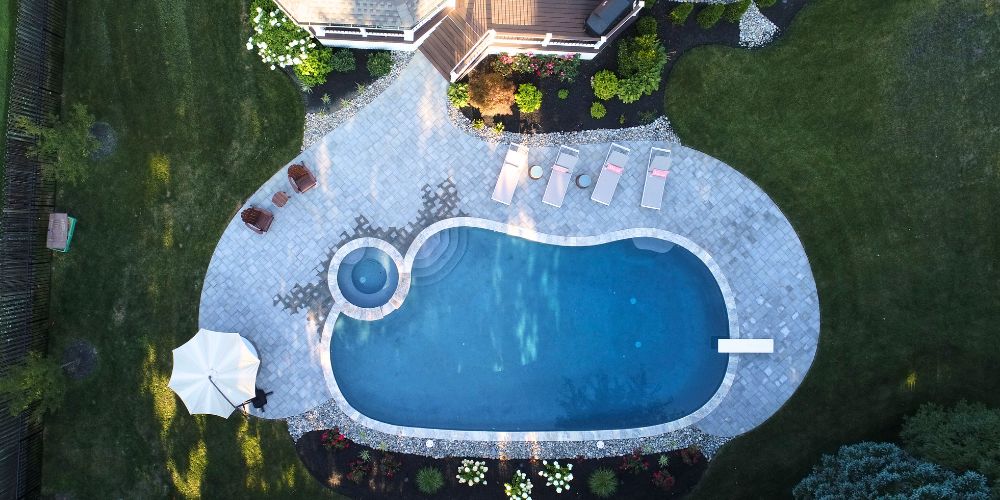Saltwater pools have gained popularity for their low-maintenance nature and gentler impact on the skin and eyes. While saltwater pools require less chemical handling than traditional chlorine pools, they still need regular maintenance to ensure they stay clean, balanced, and efficient. Here’s a comprehensive guide to maintaining your saltwater pool.
1. Monitor Salt Levels Regularly
The key to a well-functioning saltwater pool is maintaining the right salt concentration. Ideally, the salt level should be between 2,700 and 3,400 parts per million (ppm), with 3,200 ppm being optimal. Low salt levels can result in poor sanitation, while high salt levels might damage the pool’s equipment. Most salt chlorinators come with a built-in system to monitor salt levels, but it's also a good idea to check them manually every few weeks.
2. Clean and Inspect the Salt Cell
The salt cell is the heart of your pool’s chlorination system, converting salt into chlorine to sanitize the water. Over time, calcium and other minerals can build up in the cell, reducing its efficiency. It’s important to inspect and clean the cell at least every three months or as indicated by the system. To clean it:
- Remove the cell and rinse it with water.
- Soak it in a mixture of 1 part muriatic acid to 4 parts water for 15-20 minutes.
- Rinse thoroughly before reinstallation.
This simple task can extend the lifespan of your salt cell and ensure it produces sufficient chlorine.
3. Test and Balance Water Chemistry
Though saltwater pools generate chlorine, you must maintain proper water chemistry. Test the water regularly and ensure that these levels are in the correct range:
- pH levels: 7.4 – 7.6
- Chlorine: 1 – 3 ppm
- Total Alkalinity: 80 – 120 ppm
- Cyanuric Acid (Stabilizer): 30 – 50 ppm
- Calcium Hardness: 200 – 400 ppm
High pH levels are a common issue in saltwater pools, which can lead to cloudy water or scaling. Keep an eye on the pH and adjust it using a pH reducer (muriatic acid) as needed.
4. Skim, Brush, and Vacuum the Pool
Physical debris like leaves, dirt, and algae can still accumulate in saltwater pools, making skimming a necessary task. Use a pool skimmer daily to remove floating debris. Brushing the pool walls and floor once a week helps prevent algae buildup and keeps surfaces smooth.
Investing in an automatic pool cleaner can reduce the time spent manually vacuuming. However, vacuuming by hand once in a while helps ensure a thorough cleaning.
5. Monitor and Clean the Filter
The pool’s filter is responsible for removing small particles and debris from the water. Depending on your type of filter (cartridge, sand, or DE), clean or backwash it every 4-6 weeks, or more often if needed. A clean filter promotes better circulation, preventing the growth of algae and bacteria.
6. Shock the Pool Occasionally
Even though a saltwater pool constantly produces chlorine, you may still need to shock the pool after heavy usage, during a heatwave, or if the water becomes cloudy. Shocking the pool involves adding a large amount of chlorine to eliminate contaminants.
To shock your saltwater pool:
- Use a non-chlorine shock or granular chlorine.
- Follow the manufacturer's instructions for the amount to add based on your pool's size.
Shocking your pool helps reset chlorine levels and keeps your water crystal clear.
7. Maintain Water Level
Like any pool, saltwater pools can lose water through evaporation or splash-out, especially during the hot summer months. Keep an eye on the water level and refill as necessary, ensuring that the water level remains at the mid-skimmer level for optimal circulation.
8. Winterizing a Saltwater Pool
If you live in a colder climate, you’ll need to winterize your pool to protect it from freezing temperatures. Follow these steps:
- Lower the water level below the skimmer.
- Drain and clean the filter, pump, and other pool equipment.
- Add winterizing chemicals to prevent algae and maintain water balance.
- Cover the pool with a winter cover to keep out debris.
9. Check for Corrosion
Though saltwater pools are gentler on the skin, salt can be mildly corrosive to pool surfaces and metal parts over time. Periodically check pool ladders, railings, and any other metal equipment for signs of corrosion. If necessary, apply a protective sealant or replace corroded items.
Conclusion
While saltwater pools are easier to maintain than traditional chlorine pools, they still require consistent care. By regularly testing the water chemistry, cleaning the salt cell, and monitoring the filtration system, you can enjoy a sparkling, well-balanced pool all season long. For those considering saltwater pool installation, proper maintenance is key to maximizing the benefits of this type of pool. Remember, consistent care not only extends the life of your pool equipment but also ensures your water remains safe and refreshing for years to come.





Comments